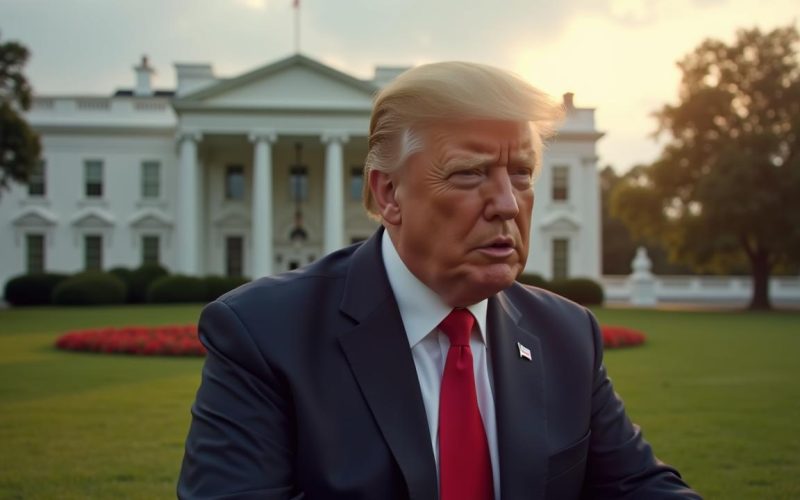A seemingly ordinary lunch between President Donald Trump and a then Japanese politician Shigeru Ishiba this month peeled back the curtain on a bold vision: to reshape Asia’s energy landscape with American natural gas, a vision that has been long overdue.
The conversation quickly gravitated toward how Tokyo could breathe life into a decades-old proposal to unlock Alaska’s gas reserves and ship it to US allies across the Pacific.
Fueling alliances: LNG as a cornerstone of Trump’s Asia strategy
According to two officials privy to the closed-door discussions, Trump and his energy advisor Doug Burgum, framed the venture as an opportunity for Japan to diversify its energy sources away from the Middle East and rectify its trade imbalance with the United States.
Eager to make a positive first impression and sidestep potentially damaging US tariffs, Ishiba struck a note of optimism regarding the $44 billion Alaska LNG project, despite lingering doubts within Tokyo about its economic feasibility.
The officials, who requested anonymity due to the sensitivity of the talks, confirmed that Ishiba expressed hope for Japanese participation in the ambitious project.
While Trump repeatedly touted the project in his public remarks following the lunch, Ishiba remained silent on the matter, and it was conspicuously absent from the official readout of the discussions.
Behind the scenes: a push for US energy dominance
Reuters’ interviews, involving conversations with over a dozen current and former US and Asian officials, unveils the Trump administration’s concerted effort to redefine economic relations with East Asia by forging stronger ties through increased investment in American fossil fuels, with a particular emphasis on LNG.
Reuters revealed that the US sales pitch strategically taps into Asian capitals’ concerns about tariffs and the security of sea lanes vital for their energy imports.
This behind-the-scenes maneuvering and the intricacies of the US approach have not been previously reported.
While the Alaska LNG proposal grapples with cost and logistical hurdles, Japan, South Korea, Taiwan, and other nations are increasingly receptive to the idea of expanding US gas imports.
This shift could not only bolster the US economy but also temper the growing influence of China and Russia in the region.
Japan’s pivotal role: a hub for US LNG distribution
Japan’s participation is vital for Trump’s strategy.
As the world’s second-largest LNG importer, a major investor in energy infrastructure, and a trading hub with a surplus of LNG, Japan could unlock new markets for US gas in Southeast Asia.
“If the Trump administration were to have its way, US LNG would flow in massive quantities to Japan and South Korea and then would flow downstream…so that Southeast Asia would become economically dependent on the United States,” Kenneth Weinstein, Japan chair at Hudson Institute, a conservative think tank, told Reuters.
It’s redrawing the map of energy dependence.
In a joint statement with US Secretary of State Marco Rubio recently, Japanese and South Korean foreign ministers pledged to bolster energy security by “unleashing” America’s “affordable and reliable energy,” particularly LNG, yet they made no mention of Alaska.
White House National Security Spokesman Brian Hughes told Reuters the US “produces some of the cleanest LNG in the world and we believe the Japanese can play an even bigger role in purchasing America’s abundant oil and gas”.
Japan’s foreign ministry declined to comment on the accounts of the Ishiba-Trump meeting.
However, Japanese media reported that Japan’s trade minister intends to visit Washington to seek exemptions from Trump’s tariffs and explore avenues for Japan to purchase more US LNG.
Overcoming obstacles: the Alaska LNG challenge
The concept of constructing an 800-mile pipeline to connect gas fields on Alaska’s North Slope to an export terminal on its Pacific coast has been plagued by high costs and challenging terrain.
Expecting that Trump would bring up a project he has personally championed, Japan was preparing to voice tentative support at the meeting with Ishiba to secure his favor and prevent trade disputes.
The US delegation urged Japan to consider infrastructure investments in Alaska LNG and long-term purchase agreements.
They highlighted the project’s geographical proximity to Japan compared to the Middle East and the fact that shipments would bypass vulnerable chokepoints such as the Straits of Hormuz and Malacca, and the South China Sea.
US Senator Dan Sullivan of Alaska, who was briefed on the discussions, emphasized that increased purchases of US LNG could help Asian allies reduce their dependence on Russian gas.
Sullivan told Reuters that Alaska LNG “was a big part of the discussion” with Ishiba. Sullivan and another official stated that at one point during the meeting, US officials used maps to illustrate the strategic advantages of the Alaska project.
“Having a president who’s forceful and tenacious, spending this much time on this project, I’m sure made an impression on the Japanese,” Sullivan said.
Project developers are actively seeking investment from companies such as Inpex, a Tokyo-listed oil and gas exploration company whose largest shareholder is the Japanese government, sources confirmed.
Inpex declined to comment on “discussions or dealings with specific stakeholders”.
Japan currently sources approximately one-tenth of its LNG from the US, with similar proportions coming from Russia and the Middle East, according to Japan’s finance ministry. Australia accounts for roughly 40%.
Hiroshi Hashimoto, senior analyst at the Institute of Energy Economics, Japan, projects that LNG imports from the US could account for 20% of Japan’s total over the next five to ten years as existing contracts, including those with Russia, expire.
US LNG is primarily shipped to Japan from the Gulf of Mexico via the Panama Canal or past Africa and through the Indian Ocean.
There are currently no LNG export terminals on the US West Coast, which would offer a more direct route to Asia.
However, Sempra’s Costa Azul project in Mexico, supplied by US gas, is expected to commence commercial operations next year.
According to LSEG data, the US shipped 119.8 billion cubic meters of LNG last year, with over a third destined for Asia.
Securing Asian allies through energy ties
Beyond Japan, Trump’s argument for energy security appears to be gaining traction in other parts of Asia, particularly in light of looming trade tariffs.
Indian Prime Minister Narendra Modi made a similar pledge regarding gas in a meeting with Trump.
Taiwan is also considering increasing its purchases of US energy, including LNG from Alaska.
Landon Derentz, who served as a senior US energy official during Trump’s first term, believes that increasing Taiwan’s reliance on US energy could deter China from taking aggressive measures such as naval blockades.
He stated that with US supplies, “in some ways you’re contracting for a security guarantee that the United States is going to be an advocate in the event of a conflict in making sure that supply arrives”.
South Korean officials also confirmed that South Korea is considering investing in Alaskan LNG and other US energy projects.
One official noted that Seoul hopes to gain concessions from Trump in return.
A spokesperson for South Korea’s industry ministry stated that Seoul is exploring avenues to strengthen energy security with the US.
Bill Hagerty, a US senator for Tennessee who served as ambassador to Tokyo in the first Trump administration, expressed his desire for Japan to become the primary distribution hub for US-origin LNG.
He commented that “Whether it’s from Alaska, Louisiana or Texas, America can work very closely with Japan to create the type of energy security bonds that will be great for our nations’ economies and for our national security”.
The post How Trump is using US gas to reshape Asia’s energy ties appeared first on Invezz


